10 Kitchen Fire Facts and Statistics – 2025 Update
-

- Last updated:
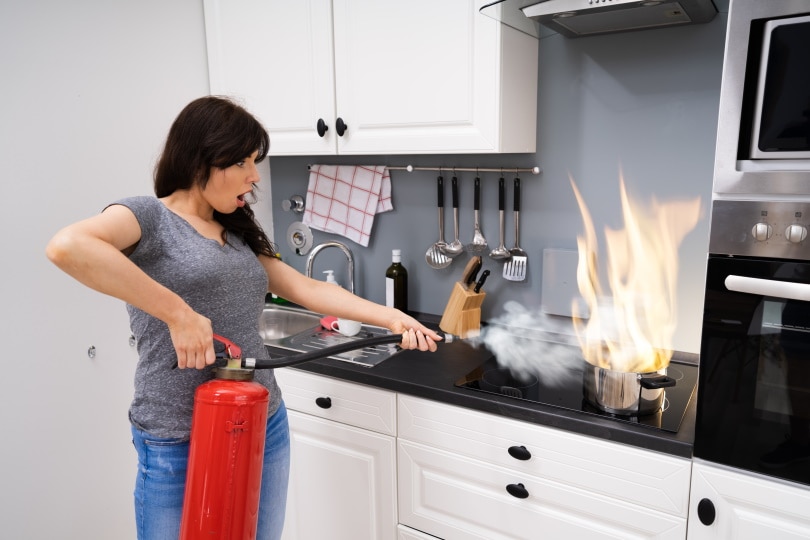
Note: This article’s statistics come from third-party sources and do not represent the opinions of this website.
The kitchen is a central hub for the home. It’s also the place with the highest rate of fire-related incidents in the home.
Whether you’re a restaurant owner or someone who cooks at home, kitchen fires are always a concern. Coincidentally, it’s probably something that doesn’t cross your mind too often.
Kitchens can be dangerous fire hazards, but they don’t have to be. By educating yourself on kitchen fires and how to prevent them, you can lower your chance of being injured in the kitchen. Below are 10 kitchen fire statistics that will keep you informed and prepared for any eventualities involving kitchen fires.
Click below to jump ahead:
- Rate of Kitchen Fires Worldwide
- Causes of Kitchen Fires and Age Group at Most Risk
- Kitchen Fire Damages and Ways to Stop Kitchen Fires
Top 10 Kitchen Fire Statistics
- 49% of house fires are caused by cooking.
- Firefighters respond to 500 cooking-related fires every day.
- More than a quarter of people who died due to kitchen fires were sleeping during the incident.
- The number of kitchen fires more than triples on Thanksgiving Day.
- Stovetops were the cause of 61% of cooking fires.
- Clothing ignitions cause less than 1% of all kitchen fires annually in the US.
- Adults aged 65 years or more are 2.5 times more likely to die in a kitchen fire.
- In the US, kitchen fires cause damages worth $1.1 billion annually.
- In the US, about 550 people die every year, and 4,820 are injured due to kitchen fires.
- 25% of Americans do not have a fire extinguisher.
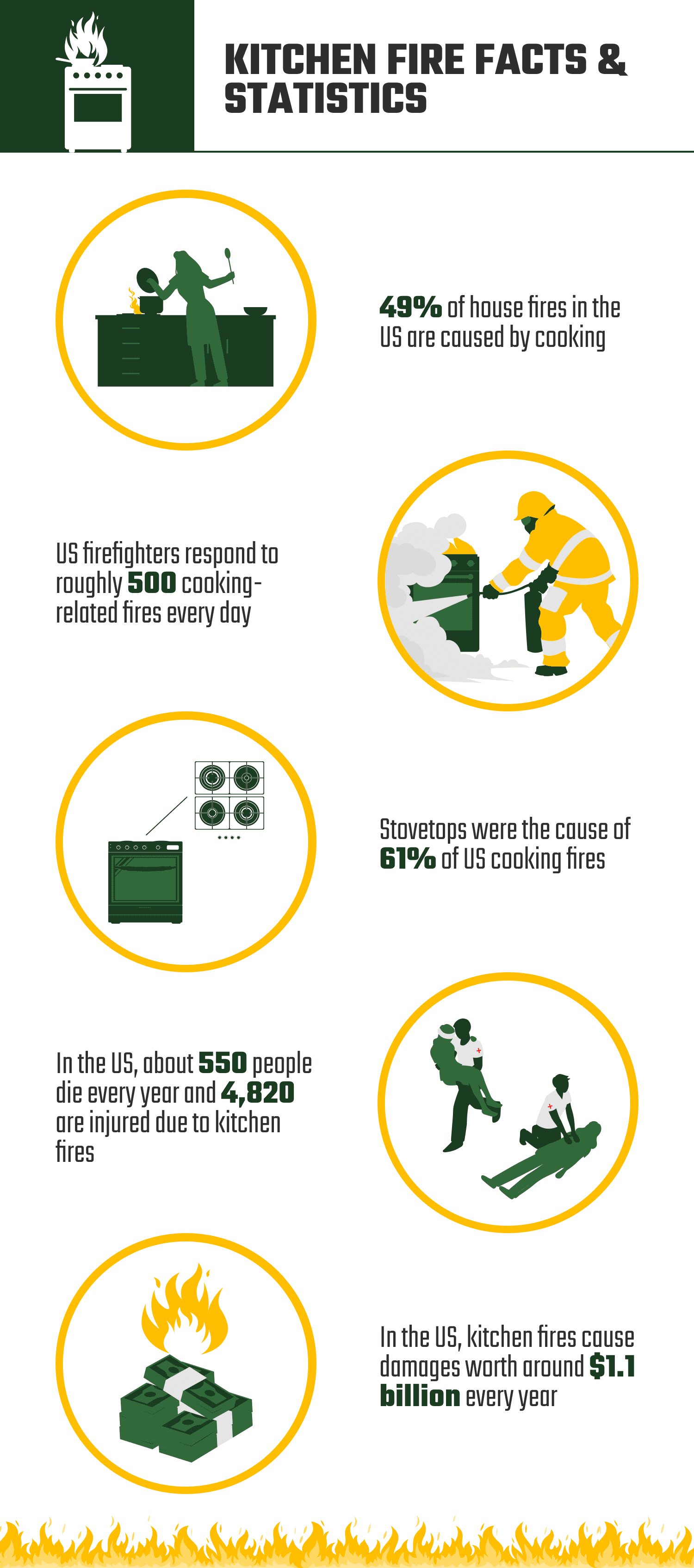
Rate of Kitchen Fires Worldwide
1. 49% of house fires are caused by cooking.
(NFPA RESEARCH)
While everyone can take a few simple precautions to protect their homes and families, the crucial thing to remember is to stay in the kitchen while cooking. It may seem obvious, but many people leave their kitchens and go to another room. Sometimes, they even leave the house while cooking.
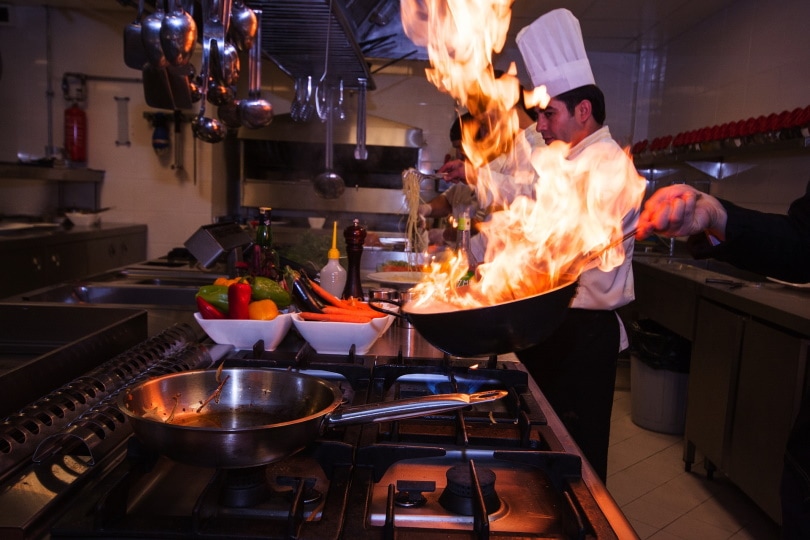
2. Firefighters respond to 500 cooking-related fires every day.
(FARM BUREAU INSURANCE)
Millions of people cook each day, so there is always a chance that a fire could start in the kitchen. Firefighters across the USA respond to calls about cooking-related fires every day. Some of those fires end up deadly.
3. More than a quarter of people who died due to kitchen fires were sleeping during the incident.
(NFPA REPORTS)
Most deadly kitchen fires happen when residents are asleep. When you’re sleeping, you don’t smell smoke easily. That’s why it’s best to install a smoke detector near your bedroom. Also, check its batteries frequently to make sure it’s working.
Before you go to bed, always check your kitchen for potential hazards, and be sure to switch off all cooking appliances. These are just a few safety tips to help keep you and your family safe while you sleep!
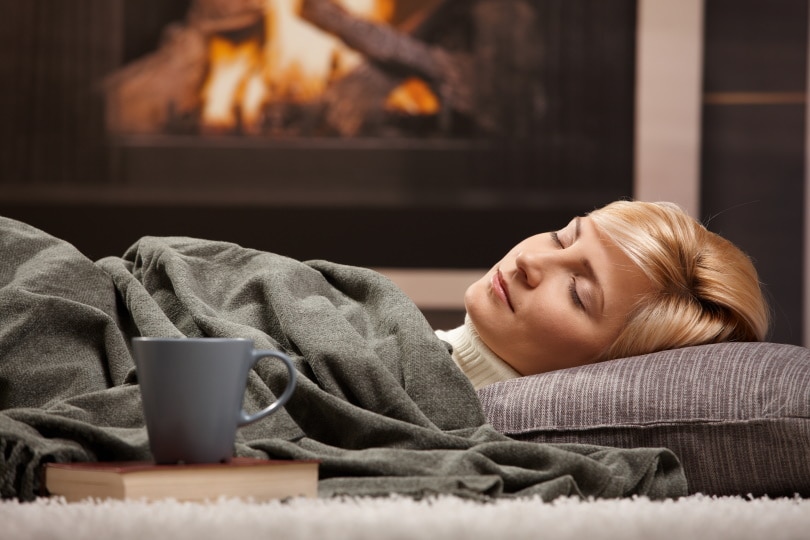
4. The number of kitchen fires more than triples on Thanksgiving Day.
(NC CONSUMER)
Cooking is one of life’s pleasures, but it can also be one of life’s biggest hazards if you’re not careful. Many families get together and cook large dinners on Thanksgiving, more than tripling the number of fires reported across the USA.
It’s an alarming statistic that shows how crucial it is to have an escape plan when cooking in your kitchen. Take some time to discuss safety with your family members. This way, you can all work together to prevent a kitchen fire from happening.
Causes of Kitchen Fires and Age Group at Most Risk
5. Stovetops were the cause of 61% of cooking fires.
(NFPA REPORTS)
There are many fixtures in a kitchen, such as a fridge and a stovetop. The stovetop was the leading cause of kitchen-related fires. Dozens of lives are lost and thousands of injuries and damages sustained as a result.
Stovetop related fires are preventable. Ensure that you are using the stovetop on the right settings, and always have them switched off whenever not in use. Never leave your stovetop unattended when you are cooking, even if it is set to low heat.

6. Clothing ignitions cause less than 1% of all kitchen fires annually in the US.
(NFPA)
Clothing items are a source of fire hazards in the kitchen, accounting for 1% of all kitchen fires. This may seem insignificant but just keep any combustible materials away when cooking at all times. It includes dishtowels and clothing hanging on the nearby rack.
Also, leave your clothing up out of harm’s way. Avoid leaving blouses and skirts near hot stovetops or under ceilings, fans, or vents for drying purposes after washing them. It’s best to hang these items in other well-ventilated rooms such as a bathroom or laundry room.
7. Adults aged 65 years or more are 2.5 times more likely to die in a kitchen fire.
(COVENANT HOME CARE)
Adults aged 65 years or more are at a higher risk of dying in a kitchen fire because some can be slow to react and often live alone.
This does not mean that a particular age group is any safer. But it is advisable to minimize the risk of fire in your home, particularly if you have an elderly relative who is left alone at home.
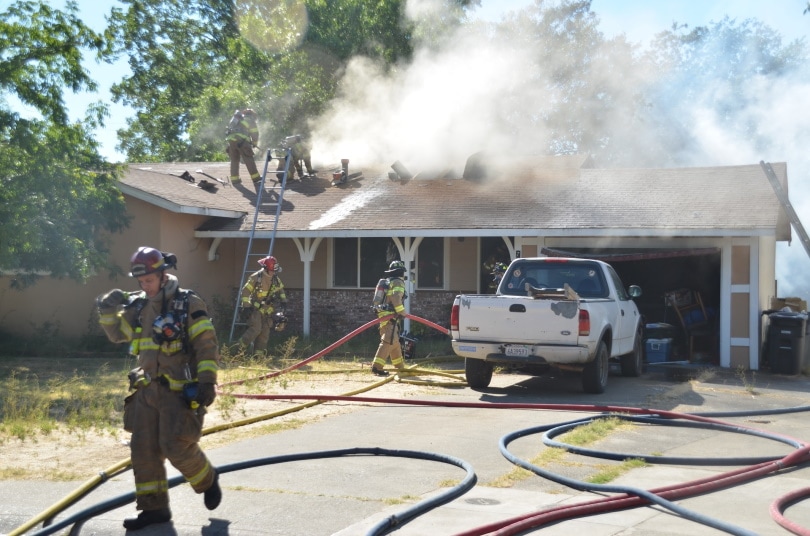
Kitchen Fire Damages and Ways to Stop Kitchen Fires
8. In the US, kitchen fires cause damages worth $1.1 billion annually.
(NFPA)
The cost of kitchen fires in the US is rising annually. It’s because of property damage and lost wages due to injuries sustained during these fire incidents.
Considering how vital kitchens are to homes, it’s no wonder so many people have lost money and valuable property due to these fires.
Kitchen fires, particularly grease fires, account for the most common type of fire in the US. These fires can cause massive losses and injuries if they occur in the home or are related to domestic activities.
In the US alone, kitchen fires account for up to $1.1 billion worth of damages annually.
9. In the US, about 550 people die every year, and 4,820 are injured due to kitchen fires.
(NFPA)
The National Fire Protection Association (NFPA) estimates that every year more than 500 people die, and others are injured from fires started in the kitchen. Over 90% of these fires occur in homes with no smoke alarms or working smoke alarms.
The best way to avoid being part of that statistic is to take steps to prevent fire from starting in the first place. You can install smoke detectors and test them regularly. Also, keep flammable materials away from flames.

10. 25% of Americans do not have a fire extinguisher.
(PR NEWSWIRE)
Many citizens in the US own fire extinguishers. However, 1 out of 4 people do not own one, and all those people may not be able to quickly put out a kitchen fire if one starts.
With this mindset, it is no wonder that the average response time for residents in case of a kitchen fire has decreased to 2 minutes and 24 seconds before the fire is extinguished.
Frequently Asked Questions about Kitchen Fires
What kitchen appliances cause most fires?
Kitchen appliances are known to cause a significant percentage of the total number of kitchen fires reported globally.
Microwaves are among the major cause of fire hazards. A common mistake people make with microwaves is using metal or foil in the oven when reheating food. The microwave will heat these items fast and cause sparks that can cause fires or even explosions! It’s always better to use microwave-safe plastic containers when heating food. Avoid containers with metal parts or coatings that can cause arcing or sparks while cooking or heating food.
Microwave ovens also overheat. If your microwave oven is getting way too hot, turn it off before it turns into a fire tragedy.
(PFVFD)
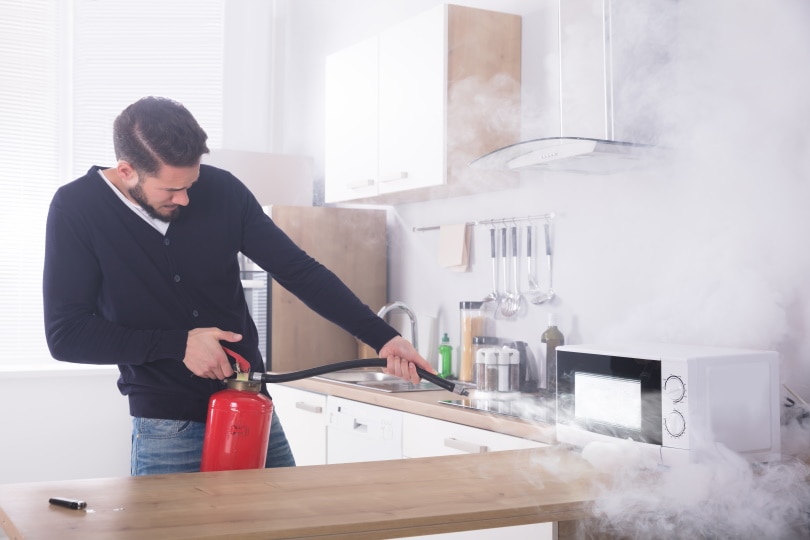
What are the different types of kitchen fires?
There are three different types of kitchen fires. The first is grease fires. Usually, these are caused when oil or fat hot from cooking touches a flammable material. The second is an electrical fire caused by faulty wiring or improper cooking equipment and appliances.
The third type is a flare-up within the home caused by easily combustible materials such as paper, plastic, and fabric.
The most common type of kitchen fire is the grease one. It can occur in cooking appliances such as stoves and fryers. Also, it can start when fat or oil comes close to a hot burner or heat source.
(WA-FIRE)
How do you prevent kids from starting kitchen fires?
It’s a fact of life that kids are curious! The problem is that curiosity and kitchens don’t mix well. Children are the most likely to start a fire in any room.
To prevent this from happening, you must arm yourself with knowledge about preventing fires and kitchen safety.
A good way to start is to make sure all your kitchen appliances are turned off and unplugged before you leave the house. It includes toasters and coffee makers. Make sure dishwashers are empty, and refrigerator doors are shut.
Sometimes, kids like playing with lighters or matches in the kitchen. You must know where all your matches are at all times and ensure they’re not easily accessible to kids when you’re not home. Keep lighters high up on a shelf where children cannot reach them or in a locked cabinet.
(NBC NEWYORK)
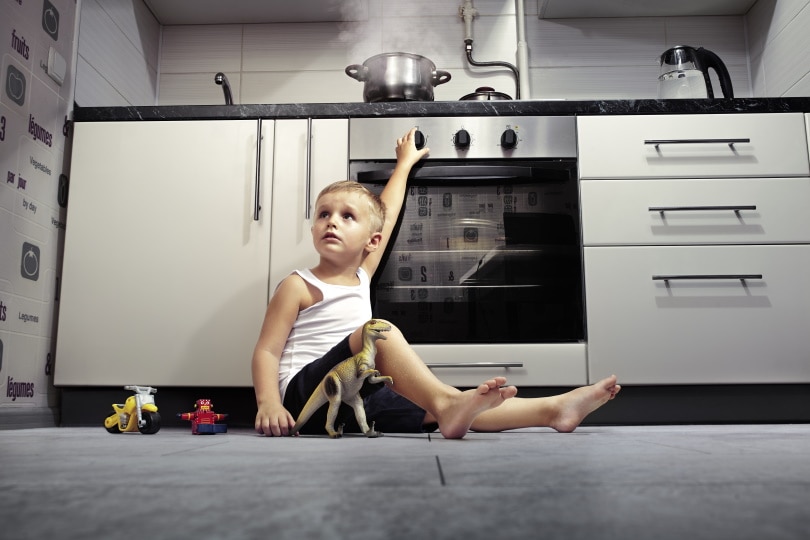
How do you stop a kitchen fire?
Most people may reach for a bucket of water as a first step in trying to contain the fire. However, this is not advisable because water can cause the fire to spread or even flare up due to its heat-absorbing properties. So, what should you do?
The first thing is to turn off the stove and its burners. You can do this by turning off the gas supply. But, make sure the flames have died down before leaving the kitchen.
Next, turn off any other ignition sources in the room, such as lights, ovens, and stoves. Make sure all electrical appliances are unplugged and cool enough not to catch fire. It includes microwaves and blenders that could explode if left on for too long.
Once you’ve done this, open all windows in the house. Try to get everyone out as soon as possible. Then, call 911 immediately so firefighters can get there quickly and put out the fire safely without anyone getting hurt.
Remember never to panic. It’s normal to feel nervous when there’s a kitchen fire. But if you panic, your body will produce stress hormones that can interfere with your ability to make sound decisions. It can be dangerous if you attempt to put out the fire yourself and get burned or asphyxiated in the process.
(AHA INSURANCE)
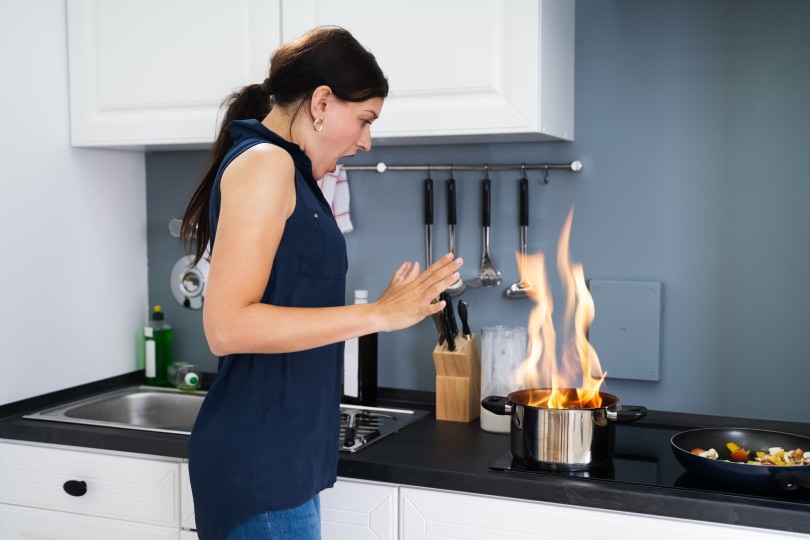
How do you use a smoke detector in the kitchen?
A smoke detector is a small electronic device that continuously monitors the air for the presence of smoke. If any is detected, it will emit a loud beeping sound, alerting anyone nearby.
This device can be placed throughout your home. But, it’s crucial to place one near your kitchen. This way, you can be alerted it if there is a fire while you’re sleeping or away from home. You should also place smoke detectors on every floor of your home. Don’t only rely on one detector to protect the entire house.
Smoke detectors should always be kept at least ten feet away from any heating appliances, such as stoves or furnaces. Smoke detectors should not be covered. These devices are designed to detect invisible molecules of combustion before they become visible flames that can destroy your home.
(NFPA)

What time do most kitchen fires start?
Most kitchen fires occur between 5pm and 10pm. It’s because most people are already at home at that time. Many of them may be in the kitchen preparing food for the family.
(AAA LIVING)
How to Prevent Kitchen Fires
Kitchen fires are common, and they can cause a lot of damage to your home and belongings. That’s why you should take extra precautions to prevent it.
First, ensure you check your kitchen appliances frequently for any problems that could cause a fire. Check the cords, plugs, and connections of the appliances. It includes your stove, oven, microwave, and toaster. Replace any worn or frayed cords immediately. Also, clean your range hood filters with water regularly, not just with a vacuum cleaner’s brush attachment.
If you have an electric stove, do not cook and heat your home at the same time. This process is dangerous. It can lead to electrical sparks that could ignite something flammable, such as paper towels or curtains. If you feel you must use both appliances at once, make sure the stove is off, unplugged, and cool before using a space heater in the same room.
Also, do not overload electrical outlets with too many appliances plugged in simultaneously. Additionally, never leave cooking unattended and never leave food cooking on a stovetop for longer than necessary.
Keep your kitchen clean. Grease and food residue can build up on the stovetop and cause a fire when it’s heated. If you spill food on the stove, wipe it up right away with a wet rag or paper towel.
•You might also like: Are Air Fryers Energy Efficient?
Conclusion
When it comes to kitchen fires, prevention is key. Perhaps one of these kitchen fire statistics will be the extra push needed to change or inspire you to change your kitchen.
If you are a homeowner or a manager of an apartment complex, you should have the right info about kitchen fire statistics. Kitchen fires occur often and cause a lot of damage to property and injuries or fatalities to people. Understanding the risks involved in a kitchen is crucial.
Understand what you should do if you are at risk of fire in your home or business. Make sure you have the right tools and equipment to combat fires. Above all, always keep children away from kitchens and any other place with open fire flames.
Featured Image Credit: Andrey_Popov, Shutterstock
Contents


